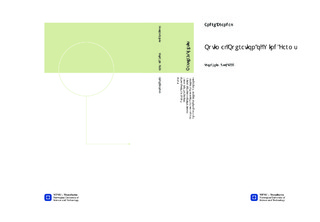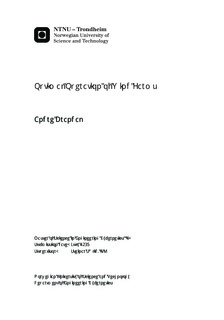| dc.contributor.advisor | Sælid, Steinar | nb_NO |
| dc.contributor.author | Brandal, Andre | nb_NO |
| dc.date.accessioned | 2014-12-19T14:08:27Z | |
| dc.date.available | 2014-12-19T14:08:27Z | |
| dc.date.created | 2013-11-06 | nb_NO |
| dc.date.issued | 2013 | nb_NO |
| dc.identifier | 662353 | nb_NO |
| dc.identifier | ntnudaim:10150 | nb_NO |
| dc.identifier.uri | http://hdl.handle.net/11250/261097 | |
| dc.description.abstract | In this project we considered the wind farm operation planning to maximize the total power produced. The wind farm consisted of a row of three wind turbines. Two strategies were evaluated. The first strategy was the effect of rotating the downwind wakes away from the downwind turbines by the use of yaw control. The second strategy was the effect by reducing the most upwind turbines power coefficient. The two strategies was simulated where they were first tested individually, then a combination of them was evaluated. It was concluded that both of the strategies increased the total power production individually.The yaw effect showed that it could potentially give a much larger total power production compared to the effect from the frontal turbine power coefficient reduction. The increase in power production from the yaw effect is dependent on the yaw angle, this increased angle will also induce larger structural loads. When a combination of the two strategies was simulated, the total power production was lower than with the yaw effect alone. | nb_NO |
| dc.language | eng | nb_NO |
| dc.publisher | Institutt for teknisk kybernetikk | nb_NO |
| dc.title | Optimal Operation of Wind Farms | nb_NO |
| dc.type | Master thesis | nb_NO |
| dc.source.pagenumber | 92 | nb_NO |
| dc.contributor.department | Norges teknisk-naturvitenskapelige universitet, Fakultet for informasjonsteknologi, matematikk og elektroteknikk, Institutt for teknisk kybernetikk | nb_NO |

